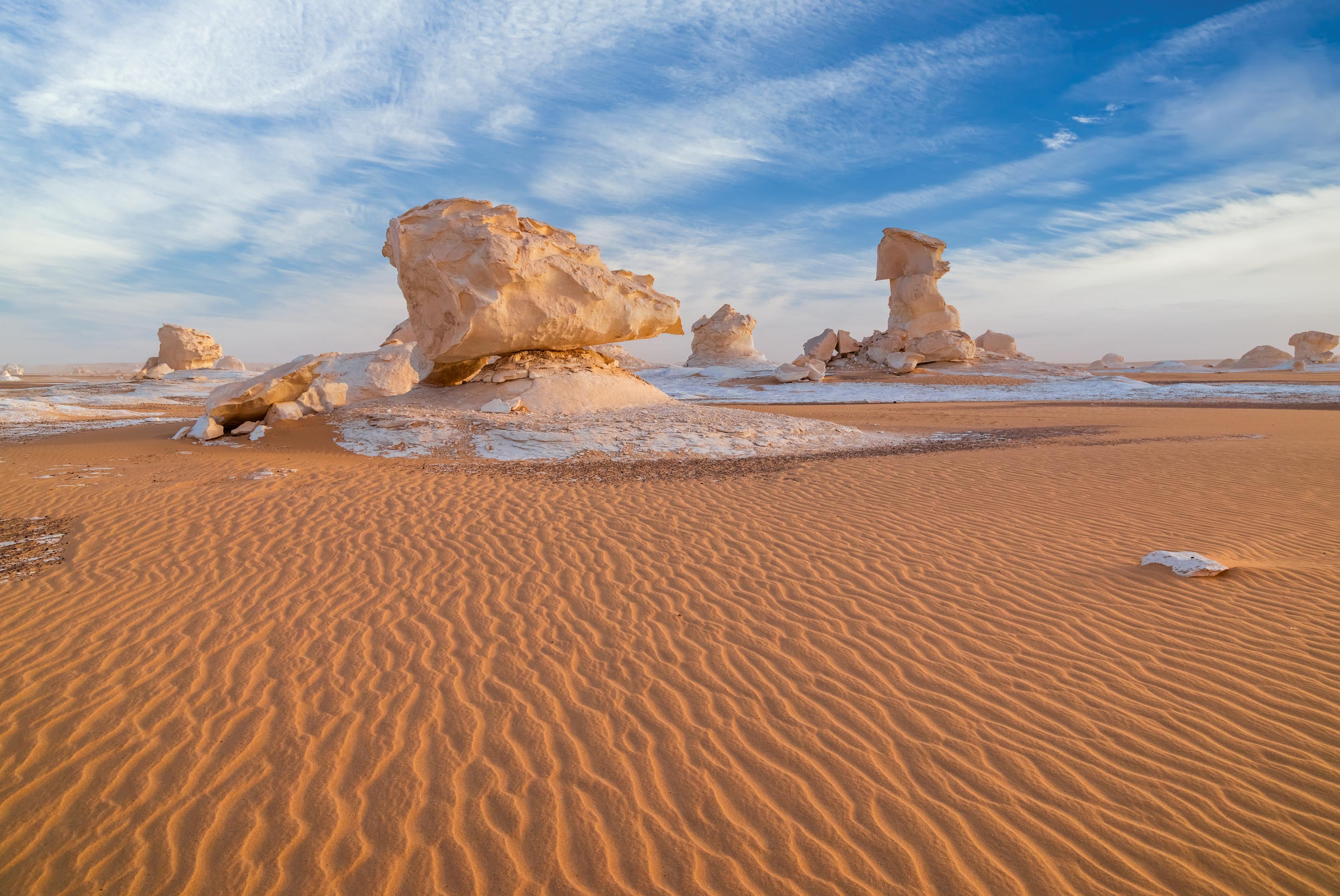
Oases in Egypt
Natural Treasures of the Desert
Embark on a journey into the heart of Egypt's untamed desert beauty, where rugged landscapes meet the serene allure of hidden oases. Immerse yourself in the unique flora and fauna that thrive in these secluded havens, witness awe-inspiring sunsets that paint the desert sky with fiery colors, and experience the profound tranquility that comes from reconnecting with nature in its purest form.
From the mystical Siwa to the remote Kharga, each oasis offers a distinct adventure, a chance to rediscover the simple wonders of the desert and the life-sustaining power of nature. Unveil the magic of Egypt’s oases, where the grandeur of the natural desert unfolds in its most captivating splendor.
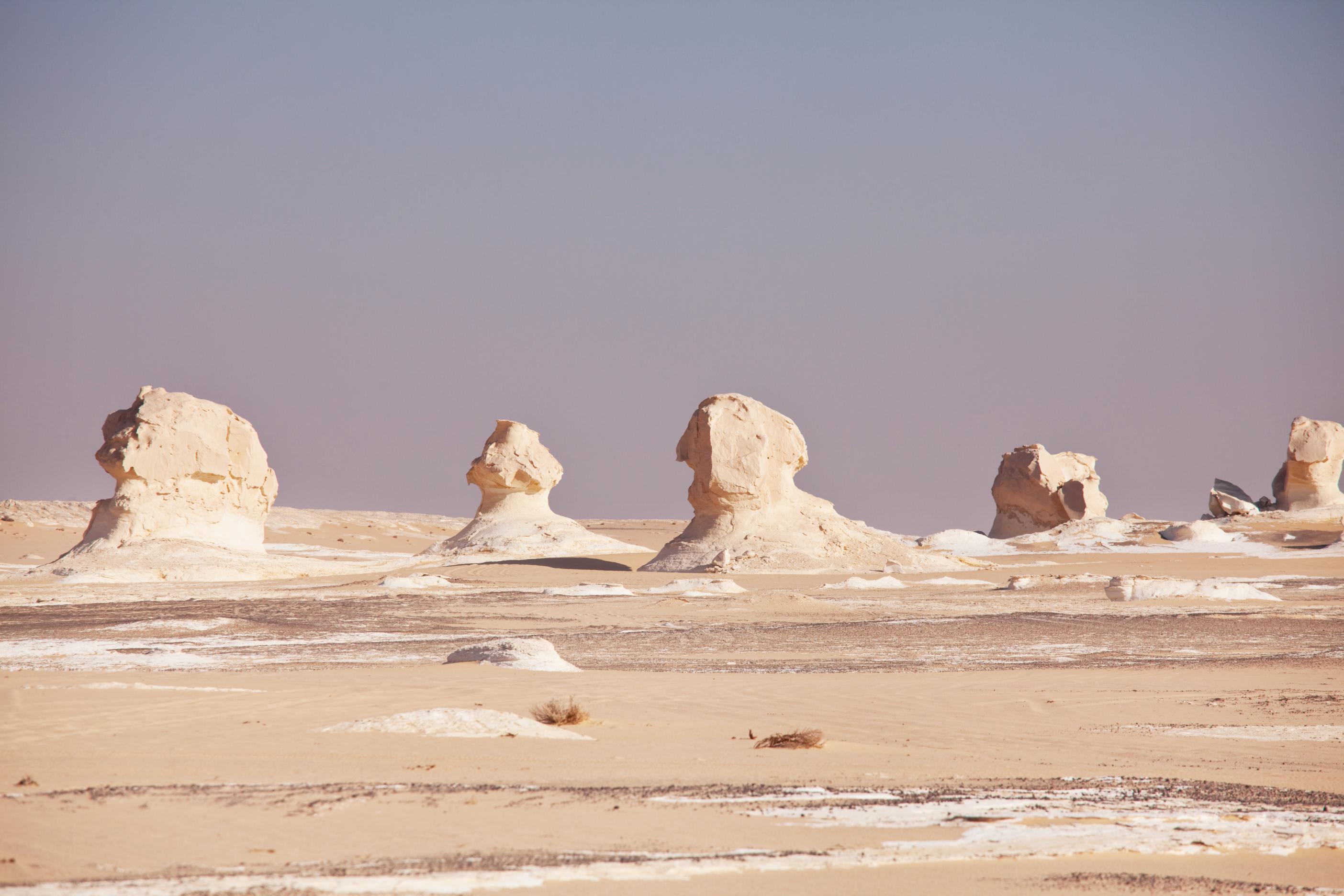
Oases in Egypt
Egypt's oasis hold secrets that span millennia, with some located over 600 kilometers from Cairo. These ancient desert havens, such as Siwa, Bahariya, and Kharga, are home to wonders that stretch from prehistoric rock art to temples once visited by Alexander the Great.
Exploring an Egyptian oasis offers a rare glimpse into a world most tourists never experience. The Temple of Hibis, the largest ancient temple in the Western Desert, stands proudly in Kharga, while Siwa's Oracle Temple of Amun dates back to 332 BC, offering a deep connection to Egypt’s rich history. Each oasis is a blend of natural marvels and historical treasures, with surreal white rock formations near Farafra and Siwa’s 200 natural springs adding to the enchantment.
This guide will help you uncover these hidden desert gems, providing insights into their spiritual significance and offering practical advice to help you plan your own unforgettable adventure to these remarkable, yet often overlooked, destinations.
The Most Famous Oasis in Egypt
Siwa stands as the crown jewel of Egypt's oases, renowned for its secluded beauty and deep cultural heritage. Nestled approximately 900 kilometers from Cairo and only 50 kilometers from the Libyan border, it remains one of Egypt's most remote settlements. The oasis’s true allure lies in its breathtaking landscapes and unique cultural identity, with a population of around 25,000 predominantly Siwi Berbers.
Siwa offers a striking contrast to the rest of Egypt, blending natural wonders with cultural authenticity. Its lush date forests and traditional blue-washed mud huts add a distinct charm to the landscape, creating a serene and timeless atmosphere. Here, the Bedouin way of life thrives, offering visitors an intimate look at centuries-old traditions that have remained unchanged for generations.
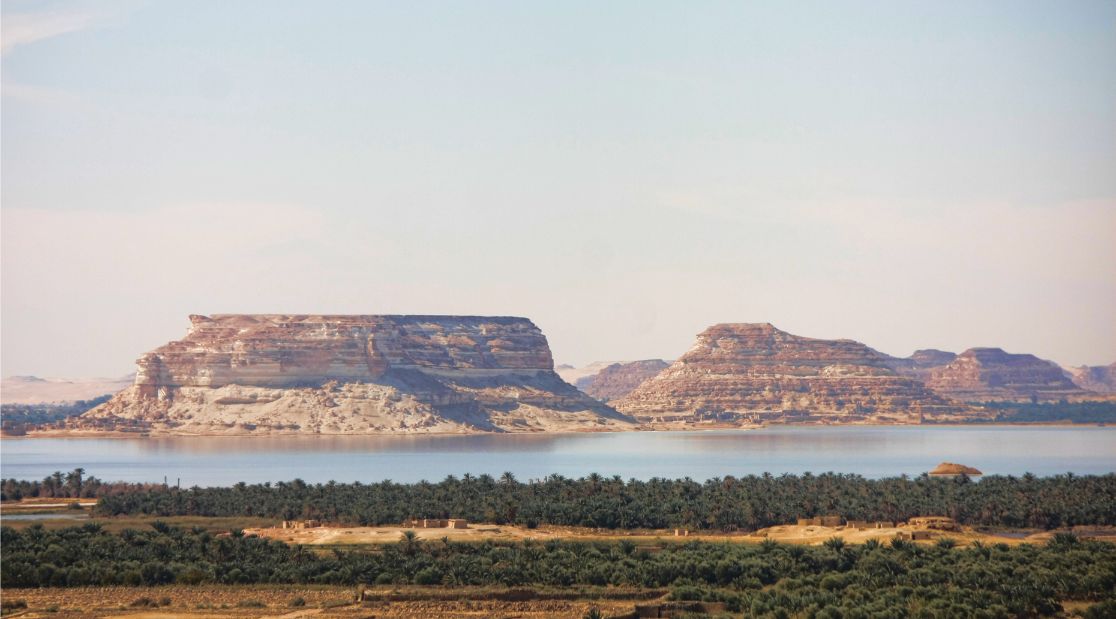
How Many Oases are There in Egypt?
Egypt is home to seven major oases scattered across its vast deserts, each offering a unique experience and charm:
- Siwa Oasis: The most famous and remote, located in Matrouh Governorate, known for its rich heritage and natural beauty.
- Bahariya Oasis: Famous for its lush palm groves and rejuvenating natural hot springs.
- Farafra Oasis: Renowned for its stark, breathtaking beauty and vibrant artistic community.
- Dakhla Oasis: One of the most picturesque, about 350 kilometers southwest of Cairo, offering stunning landscapes and a peaceful atmosphere.
- Kharga Oasis: The largest oasis in Egypt, located 600 kilometers southwest of Cairo, with a rich history and abundant archaeological sites.
- Faiyum Oasis: The closest to Cairo, just 115 kilometers away, and one of Egypt’s earliest inhabited regions, with a mix of natural beauty and cultural history.
- El-Qasr Oasis: The seventh major oasis, known for its charming blend of history and desert tranquility.
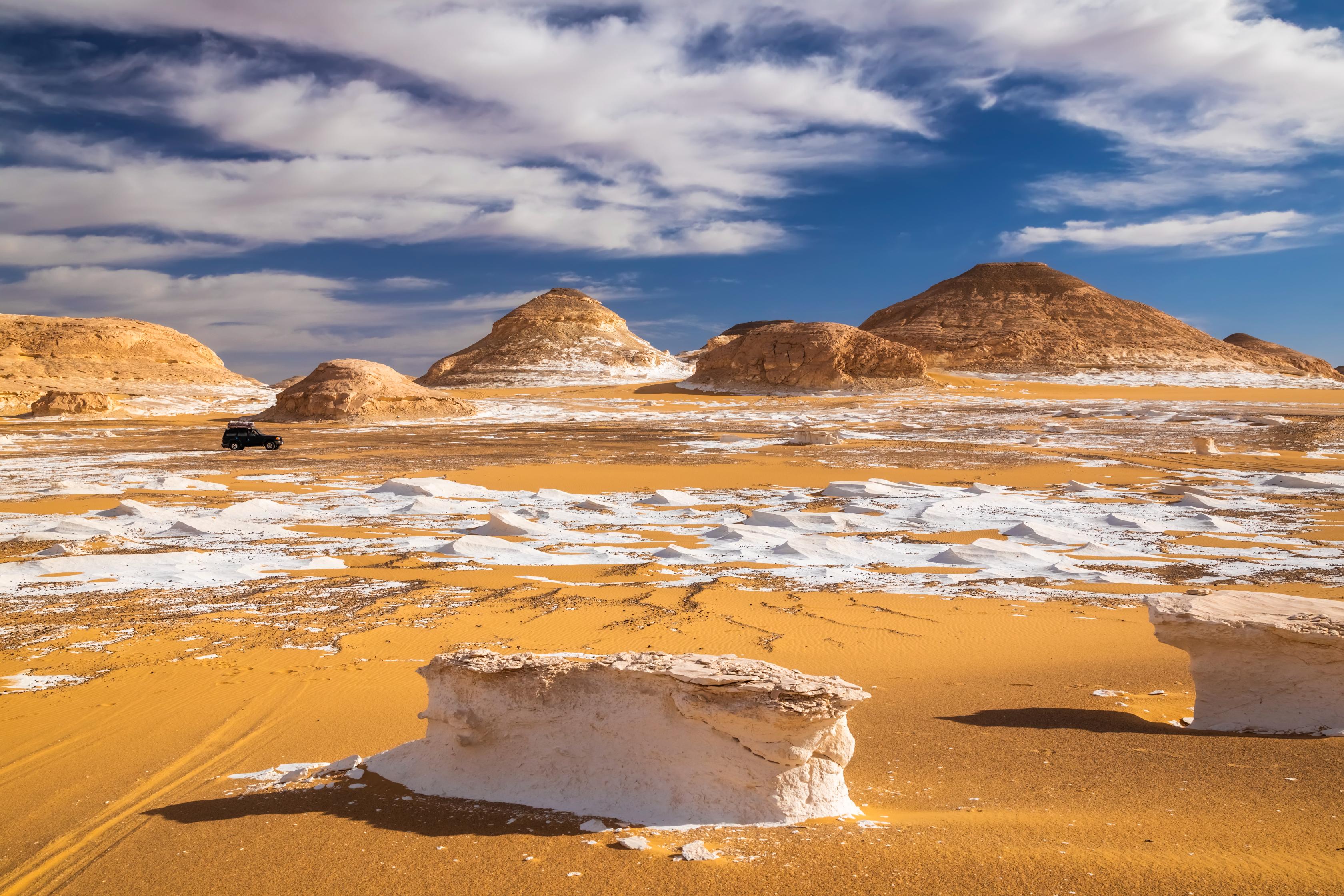
While some sources list only six, most reliable documentation confirms these seven principal oases. Notably, Faiyum is the only oasis among them that formed naturally, making it particularly unique. While Faiyum offers the easiest access to oasis life due to its proximity to Cairo, those seeking a more authentic and isolated desert experience should venture to Siwa, the farthest of the oases. Each of these desert gems allows visitors to explore Egypt beyond the typical tourist path, offering a deep connection to the land's natural wonders and rich cultural heritage.
The Lost World of Egypt's Desert Oases
An Egyptian oasis feels like a timeless sanctuary, preserving ancient traditions and offering a window into the past. These verdant havens stand in stark contrast to the harsh expanse of the Western Desert, making them some of North Africa's most isolated yet culturally rich locations. Settlements within these oases have existed for millennia, with traces of life dating back as far as 5000 BCE.
The classic image of sand dunes surrounding a tiny water pool doesn’t fully capture the essence of these oases. Instead, they are spread across vast depressions where underground aquifers naturally rise to the surface. Their distinct character has evolved over centuries, with each oasis forming a unique cultural island. Siwa Oasis is a perfect example, where the Berber heritage and language have earned UNESCO’s recognition as "definitely endangered."
Cultural and Oases in Egypt
The communities in these oases are living cultural tapestries. The Waḥātī people of Bahariya represent a fusion of ancient desert dwellers, western Egyptian tribes, Libyan influences, and Nile Valley settlers. Their social gatherings come alive with the sounds of traditional music, played on flutes, drums, and the simsimiyya, a harp-like instrument that has echoed through their history for generations.
Each oasis is a treasure trove of archaeological wonders. Bahariya, for instance, captured international attention in 1996 when the Valley of the Golden Mummies was discovered. This extraordinary site revealed more than 10,000 mummified bodies, making it one of the largest ancient cemeteries ever uncovered. Fayoum Oasis holds its own fascinating significance as a former center of worship for Sobek, the ancient Egyptian crocodile god.
History and Oases in Egypt
Throughout history, these remote oases served as vital strategic points. Kharga, Dakhla, Farafra, and Bahariya were part of a defensive line protecting Egypt from Libyan tribes during the time of the pharaohs. Later, under Persian rule, some of these oases became sites of exile for those out of favor.
The isolation that once made these oases so difficult to reach has, ironically, helped preserve their authentic character. Siwa’s unique cultural identity flourishes to this day, thanks in part to its historical seclusion. Until the 1980s, only challenging camel tracks through the desert connected Siwa to the Mediterranean coast, allowing its traditions to remain largely untouched by outside influence.
Hidden Archeological Wonders in Egyptian Oases
Egypt's oases conceal archaeological wonders that rival the famed sites along the Nile, yet remain largely untouched by mass tourism. The desert's seclusion has allowed each oasis to preserve a unique chapter of ancient history within its vast depressions.
In 1995, the discovery of the Valley of the Golden Mummies in Bahariya Oasis forever changed our understanding of Egypt's western regions. This extraordinary necropolis holds more than 10,000 mummified bodies, making it one of the largest ancient cemeteries in the world. The site continues to offer new insights, with a 2021 excavation revealing the ruins of three churches and monks' cells dating back to the fifth century CE.
Kharga Oasis
Kharga Oasis is home to the imposing Temple of Hibis, which was constructed by Persian builders around 500 BCE. Over time, the Ptolemies and Romans expanded it, turning it into one of the region’s best-preserved temples. Nearby, the El Bagawat cemetery, often called the "Pompeii of Egypt," preserves over 200 Christian tombs from the 3rd to 7th centuries, showcasing exceptional preservation of early Christian burial practices.
Fayoum Oasis
Fayoum Oasis is equally rich in archaeological treasures. The ruins of Karanis feature a temple dedicated to Sobek, the crocodile god, where archaeologists uncovered an altar with niches that once housed mummified crocodiles. Medinat Madi, another Fayoum highlight, boasts Egypt’s only surviving temple from the Middle Kingdom, complete with a sphinx-lined colonnade, offering a glimpse into ancient Egyptian religious life.
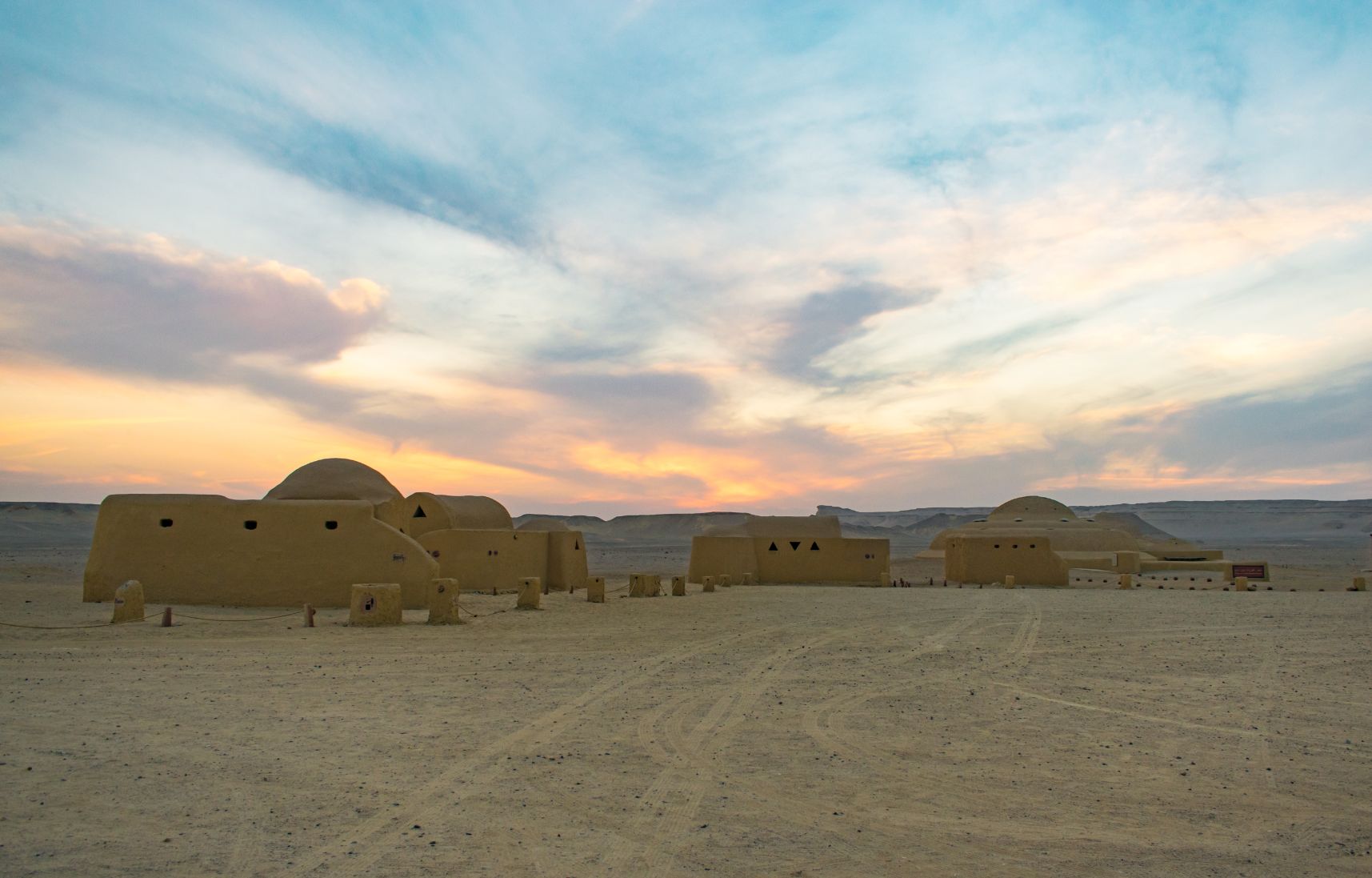
Dakhleh Oasis
In the remote Dakhleh Oasis, the temple of Seth at Mut al-Kharab has fascinated archaeologists since excavations began in 2000. Researchers have uncovered decorated stone blocks and evidence suggesting the temple's role in controlling vital resources, such as wells, and its direct ties to Egypt’s royal family.
The oases continue to surprise archaeologists. In 2019, Bahariya revealed 19 structures and a fifth-century church adorned with Greek religious inscriptions. Meanwhile, Dakhla’s Bir esh-Shaghala site yielded five mud-brick tombs containing gilded masks and pottery inscribed with mysterious ancient Egyptian writing, which remains undeciphered.
These remarkable findings showcase the oases as more than just quiet refuges; they are vibrant historical landscapes, rich with untold stories waiting to be uncovered.
Spiritual Significance of Remote Oases in Egypt
Egyptian oases were not merely life-sustaining sanctuaries in ancient times—they were sacred realms, regarded as divine gifts where gods resided and prophets delivered their messages. These lush havens, nestled in the heart of vast, arid deserts, were central to survival and crucial trade routes across the barren wilderness.
Fayoum Oasis stands as a prime example of this sacred bond. It was the main center for worship of Sobek, the crocodile god. Ancient Egyptian royalty would often retreat to the shores of Lake Qarun, reaching it via waterways connected to the Nile. Within the Karanis temple, archaeologists uncovered an altar with niches designed for mummified crocodiles, which were transported on sleds. In the first century, locals honored these sacred creatures with offerings of wine or meat, parading their preserved bodies through the streets during festivals. The temple walls are adorned with hieroglyphs celebrating both Sobek and Renenutet, the snake-headed goddess of harvests.
Siwa Oasis holds its own esteemed position as the home of the Oracle of Amun, or Amun-Ra, one of the most revered oracles of the ancient world. It was unique in that it was the only oracle not associated with Greek tradition, and its influence extended far beyond Egypt. Leaders from across the Mediterranean consulted the oracle, especially when making important political and military decisions.
Siwa’s significance reached a crescendo when Alexander the Great visited in 331 BCE after founding Alexandria. Within the temple of Amun, a priest declared him the divine son of Amun, solidifying his position as Egypt's ruler and linking him to the gods of the land.
Kharga Oasis, with its quiet beauty, played a pivotal role in early Christian history. The Bagawat necropolis, spanning across the oasis, contains 263 burial chapels constructed between the 3rd and 7th centuries AD. These tombs display artwork that fuses Mediterranean Christian motifs with traditional Egyptian elements, illustrating the unique blending of Christianity with local customs at Egypt's western frontier.
These oases were not only vital for survival; they were sacred places where the divine and the mortal intertwined and where ancient cultures left their indelible mark on history.
Planning Your Journey to Hidden Egyptian Oases
The remote oases of Egypt offer unique experiences that require careful planning, but the effort is well worth it. For the most pleasant weather, the ideal time to visit is from October to April, with temperatures ranging between 15-25°C (59-77°F). Summer, on the other hand, sees scorching temperatures that can soar above 40°C (104°F), making the cooler months the perfect time for exploration.
Reaching these hidden gems is an adventure in itself. Siwa Oasis, located about 560 kilometers from Cairo, requires a bit more effort. Travelers can take an overnight bus from Cairo or combine different transport methods, starting from Marsa Matruh on the coast. The first paved road to Siwa was only completed in the 1980s, which has helped preserve its distinct culture. Fayoum Oasis, however, offers a much easier escape, located just 115 kilometers from Cairo—an easy 2-hour drive away.
Egyptian Oasis in Fantastic Experience
To make the most of your time, plan carefully. Siwa demands at least three full days to explore its many wonders. A five-day trip allows you to experience multiple oases, using air-conditioned minibuses and 4WD jeeps to navigate the desert terrain.
Make your visit unforgettable by venturing out on your own. Renting a bicycle in Siwa lets you discover the oasis at your own pace, while desert safaris offer the thrill of sandboarding in the Black Desert, stargazing under an endless sky, and exploring incredible sites like the Valley of the Golden Mummies. Each oasis offers its own charm, from soothing hot springs to ancient temples and serene spots perfect for a night under the stars.
The communities here remain deeply rooted in tradition, especially in Siwa. It's respectful to dress modestly, with women covering their arms and legs. Popular public springs like Cleopatra's Bath can get crowded, so consider visiting the more secluded desert hot springs for a more peaceful experience.
Egyptian oases
Egyptian oases serve as living museums, preserving ancient traditions while offering modern travelers an opportunity to venture beyond the usual tourist destinations. These desert sanctuaries require extra planning, but the rewards include unparalleled archaeological wonders, spiritual significance, and authentic cultural experiences.
Each oasis tells its own unique story. Siwa enchants visitors with its remote beauty and the historic Oracle of Amun. Bahariya unveils the secrets of the Golden Mummies. Kharga reveals its Christian heritage, while Fayoum's temples pay homage to the crocodile god, Sobek. These captivating sites continue to yield new discoveries, including recent unearthings of fifth-century churches and gilded masks.
The best time to visit Egyptian oases
The best time to embark on your desert adventure is from October to April, when the weather is most favorable. Proper planning will help you forge a meaningful connection with these ancient treasures, whether you choose the easily accessible Fayoum or the distant Siwa. Be sure to pack appropriate clothing, respect local customs, and take ample time to fully appreciate these remarkable locations where history, spirituality, and natural beauty converge into unforgettable experiences.
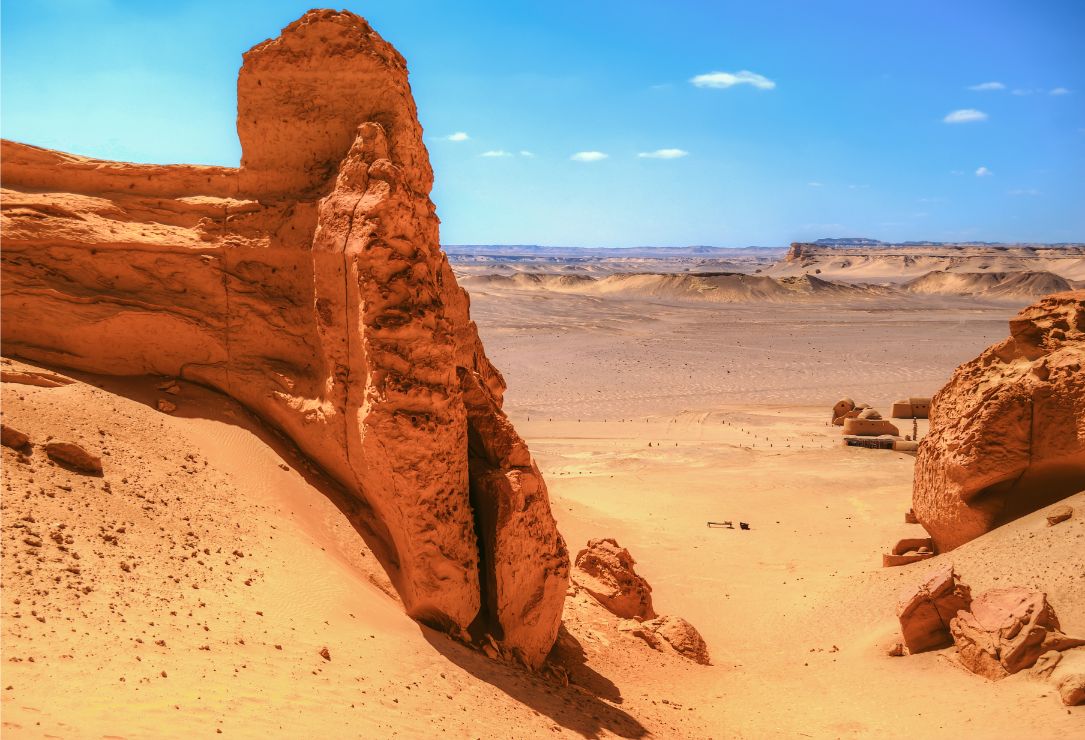
These oases are more than mere dots on a map; they are living links to Egypt's past, where traditional life thrives alongside archaeological marvels. Exploring these hidden desert gems will introduce you to an Egypt few others have the chance to experience, making every step of preparation worthwhile.
Related Articles
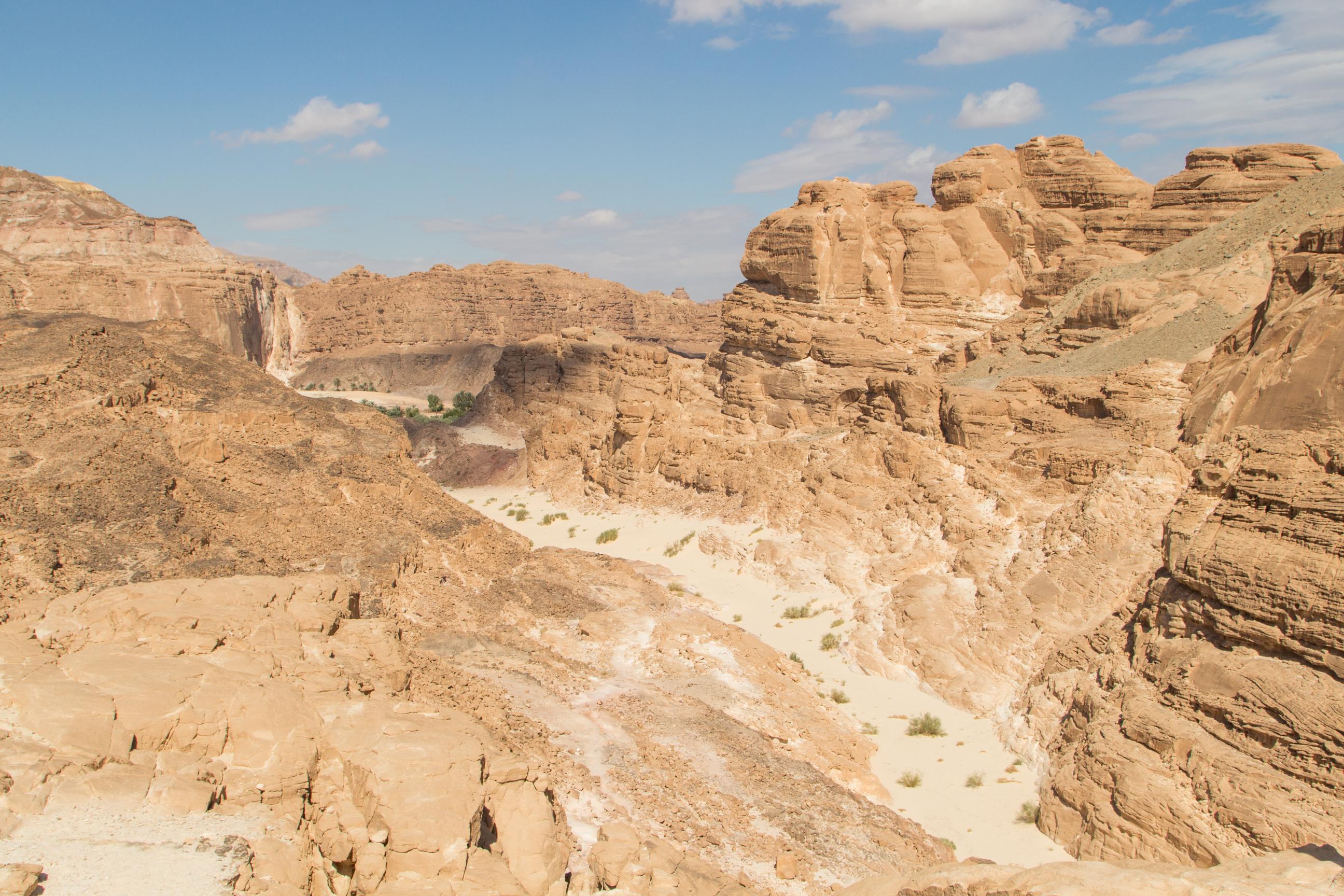
Egypt Grand Canyon and Wonders of Nature
Egypt Grand Canyon is more than just a canyon; it is a stunning collection of sculpted gorges, shaped over thousands of years by the forces of wind and water.
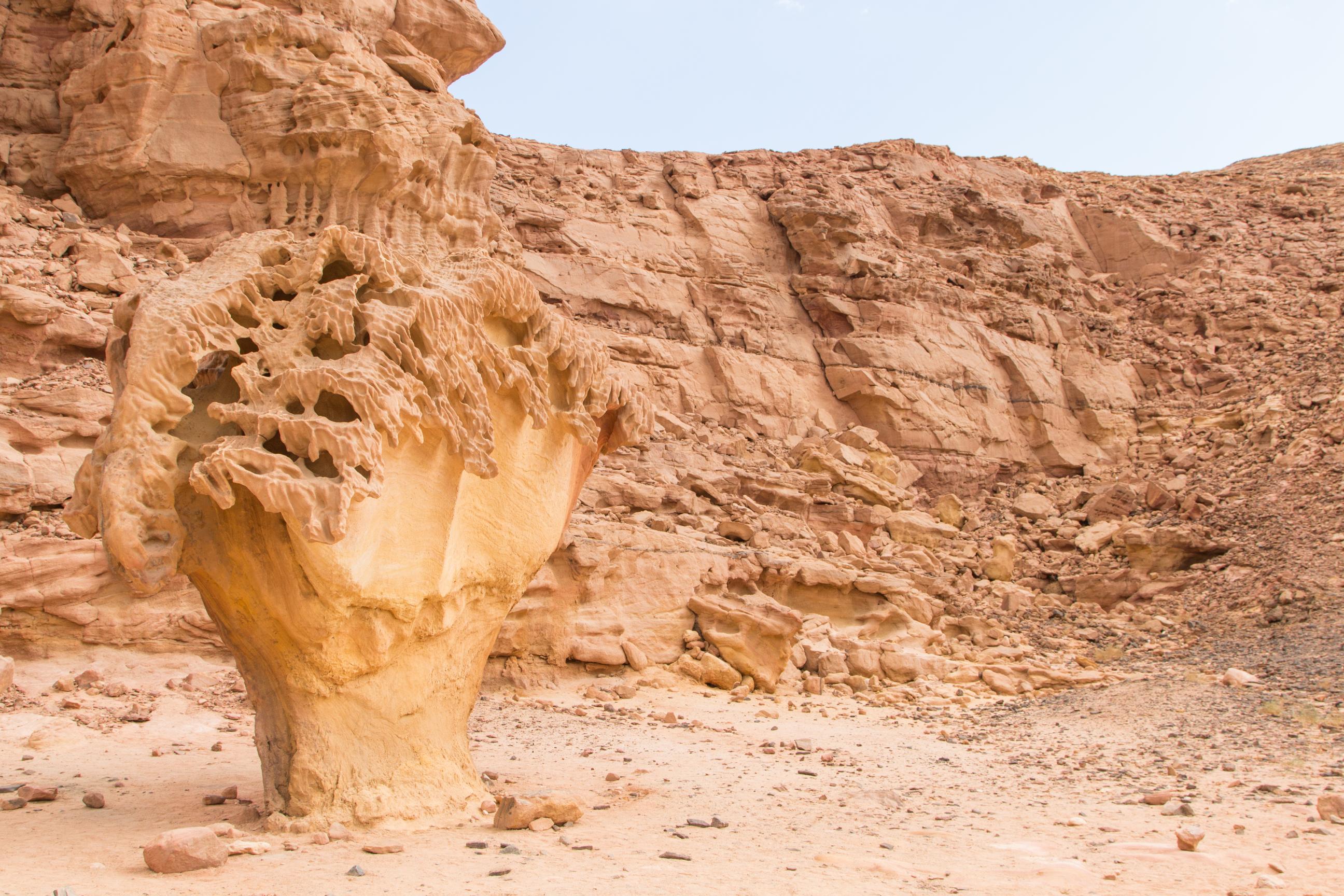
Why Egypt's Grand Canyon Should Be Your Next Adventure?
Explore the stunning formations, captivating patterns, and breathtaking beauty of Colored Canyon in Egypt. This destination is a must-visit for every adventurer.
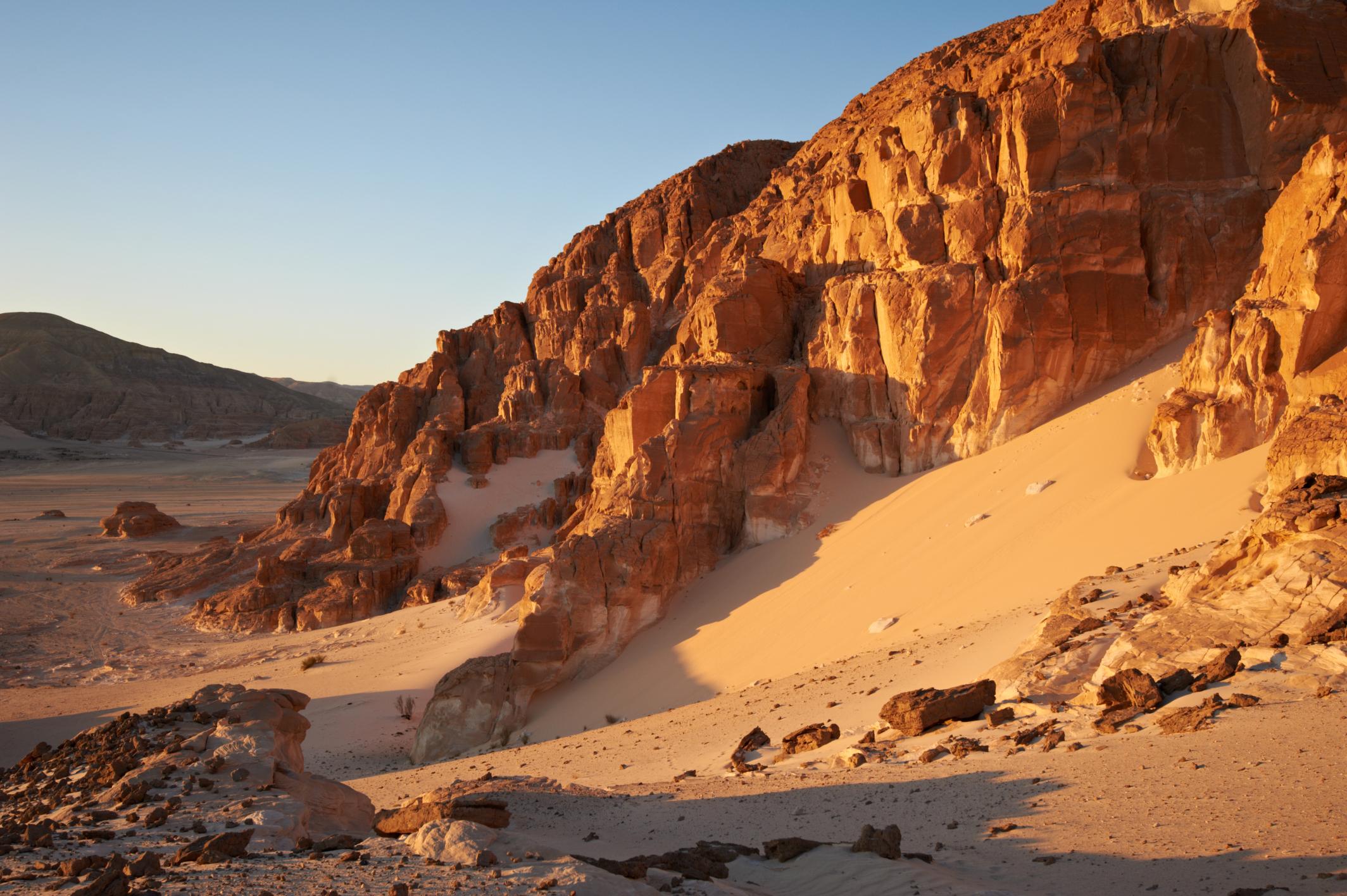
Discover The Egypt Sinai Peninsula
Uncover the mystique of Egypt Sinai Peninsula from pristine Red Sea coasts and private desert safaris to spiritual sanctuaries. Indulge in unparalleled luxury.
